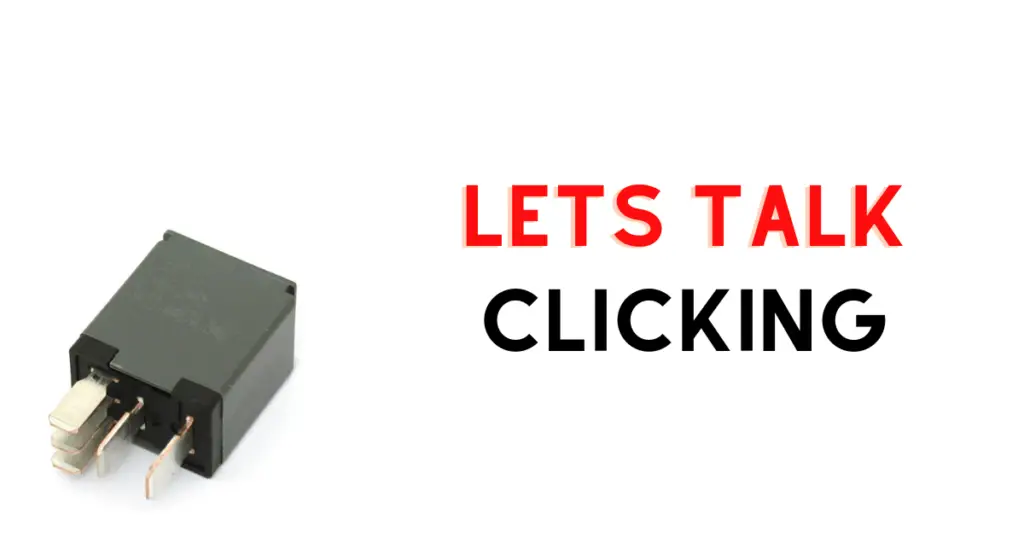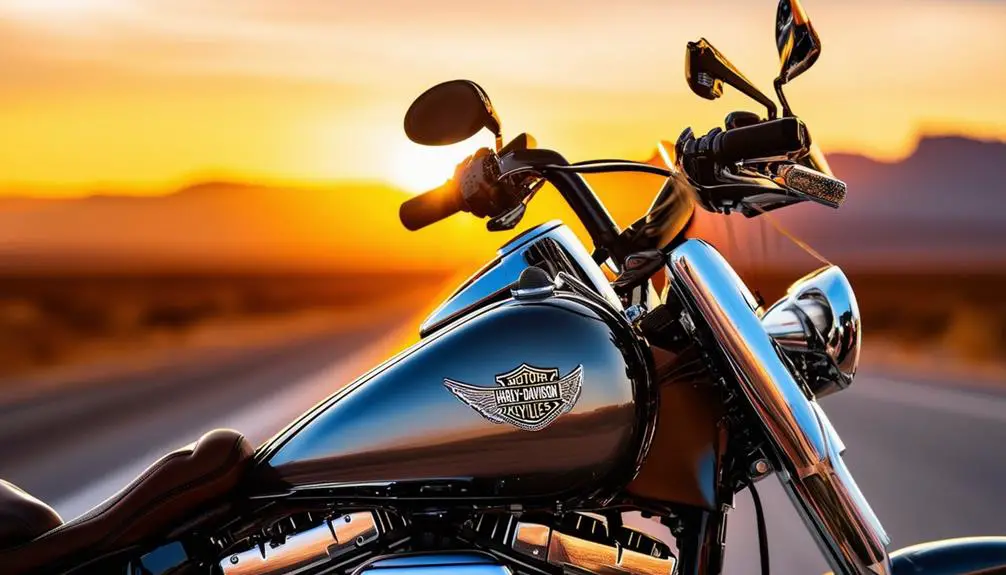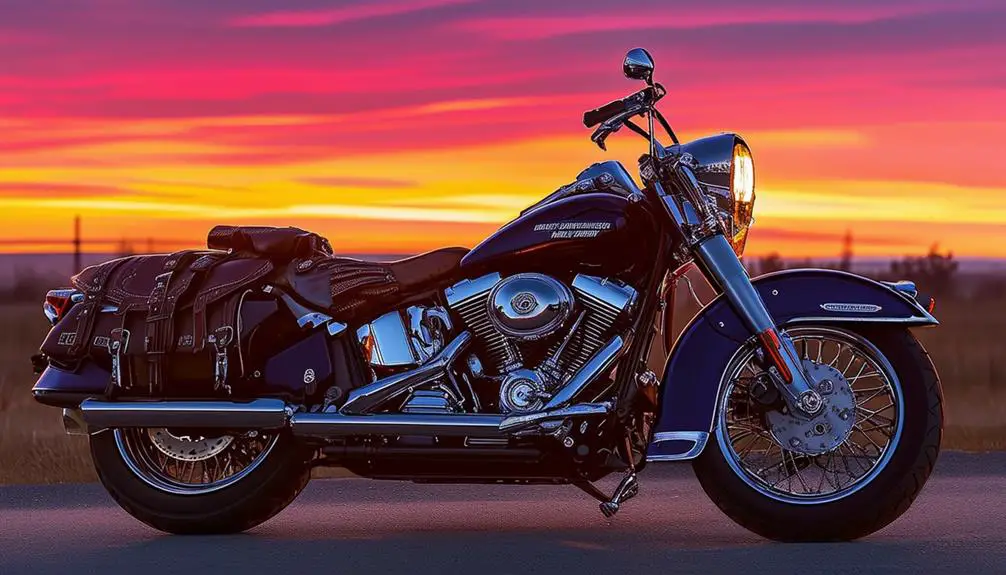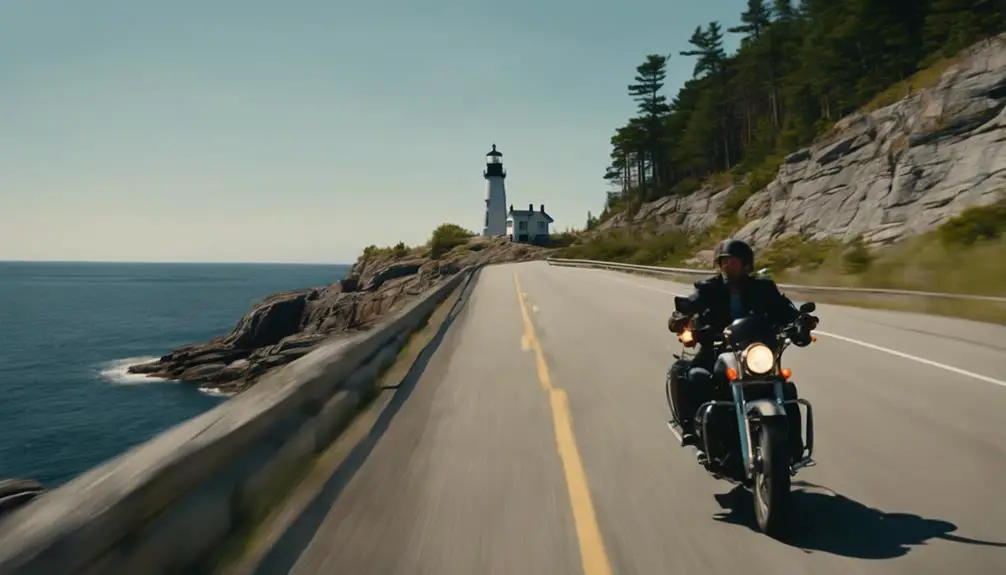Experiencing a clicking sound when trying to start your Harley Davidson can be both frustrating and concerning. You expect your motorcycle to roar to life when you hit the ignition, but instead, you’re met with a feeble click. This issue often points to an electrical problem within the starting system—a critical puzzle encompassing the battery, starter motor, and associated wiring. Identifying the cause of the clicking sound is paramount to getting you back on the road. But how can you do that?
Diagnosing the root of starting problems requires a systematic approach. The most frequent culprit is a dead or weak battery, unable to deliver the necessary power to crank the engine. Other potential issues include a malfunctioning starter motor or—in less common cases—a seized engine. It’s important to not overlook simple fixes such as ensuring battery connections are tight and free of corrosion. For those familiar with maintenance tools, voltage checks and starter tests can be undertaken to pinpoint the fault. But where should you start at home?
Key Takeaways
- A clicking sound on start typically suggests an electrical issue in the starting system.
- A systematic approach is vital for troubleshooting and resolving starting problems.
- Regular maintenance can prevent many common issues leading up to the clicking sound.
Understanding the Starting System of a Harley Davidson

To ensure a smooth ride on your Harley Davidson, it’s crucial you understand the interplay between the critical components of the starting system. These parts work in tandem to power up your motorcycle, and any glitches here can lead to starting problems.
Components of the Starting System
Your Harley’s starting system primarily includes the battery, starter motor, starter relay, and electrical connections. Each plays a vital role in igniting the engine:
- Battery: Stores the electrical energy needed for starting.
- Starter Motor: Converts electrical energy from the battery to mechanical energy.
- Starter Relay: Acts as a switch that transfers power to the starter motor.
- Electrical Connections: Wires and terminals that form the circuit.
Role of the Battery and Voltage
The battery is your bike’s powerhouse, providing the necessary voltage to all electrical components. For a Harley Davidson, a fully charged battery should exhibit about 12.6 volts when not in use. A drop in voltage can hint at a weak battery, which may result in a clicking sound rather than starting the engine.
Function of the Starter Motor
When you turn the ignition, the starter motor springs into action, drawing power from the battery to crank the engine. The robustness of the starter motor is key to a reliable start. If your Harley just clicks without starting, the starter motor or its connections might be the culprit.
Significance of the Starter Relay
The starter relay is a small, yet significant component that controls the power flow to the starter motor. Think of it as a bridge for electricity. It’s designed to handle short bursts of high current during engine ignition. A malfunctioning starter relay can disrupt this flow, leading to starting issues.
Remember to regularly inspect these components and keep them in good health to enjoy uninterrupted rides on your Harley Davidson.
Troubleshooting Starting Issues On A Harley Davidson
When your Harley makes a clicking noise and refuses to start, it typically points to an electrical issue. Your mission is to pinpoint and address the exact source, from battery to ignition.
Identifying Common Electrical Problems
First, listen for the type of clicking: a single click could indicate a faulty starter motor, while rapid clicking usually signals a dead battery. Ensure all electrical connections are clean and tight, particularly at the battery terminals and starter.
Checking the Battery Health
Conduct a voltage test using a multimeter; your battery should read above 12.6 volts when fully charged. If the voltage is low, charge the battery and retest. Persistent low voltage may mean it’s time for a new battery.
- Fully charged: Above 12.6V
- Needs charge: 11.5 – 12.5V
- Potentially dead: Below 11.5V
Inspecting the Starter Relay and Solenoid
Your Harley’s starter relay and solenoid are pivotal in channeling electrical current to the starter motor. If they’re malfunctioning, you’ll hear a click but the engine won’t crank. Test the relay with a multimeter for continuity, and the solenoid’s operation by bypassing the relay momentarily to see if the motor turns.
Evaluating the Starter Motor Condition
If bypassing the starter relay doesn’t resolve the issue, your starter motor may be at fault. Inspect it for signs of corrosion or damage. If skilled, you can remove the starter to bench test it, ensuring it spins without issue when power is applied directly.
Examining Ignition and Fuel System Components
Lastly, if electrical systems check out, briefly inspect the ignition switch, spark plug, and fuel system. Your bike won’t start without a spark to ignite the fuel, so replace any worn spark plugs and ensure the fuel system is delivering fuel as it should.
Repair, Replacement, and Diagnostic Procedures
When your Harley refuses to start with a mere click, the problem could be rooted in several key components. Understanding how to address issues with the starter motor, relay and solenoid, ignition and kill switch, as well as the motorcycle’s electrical circuits, is fundamental to resolving the starting problems your bike is facing.
Replacing the Starter Motor
If the starter motor is faulty, you will need to replace it. First, disconnect the battery to prevent any electrical mishaps. Locate the starter motor, which is usually positioned near the bottom of the engine. Remove the mounting bolts and electrical connections, then install the new starter motor in reverse order, ensuring all connections are secure.
Solving Relay and Solenoid Issues
The relay and solenoid are critical for supplying power to the starter motor. If they fail, your bike will not start. Check the relay by locating it (usually found near the battery or under the seat) and ensure the wiring is intact and corrosion-free. If the relay clicks but the starter doesn’t turn, replace the solenoid. Disconnect the battery, remove the old solenoid, and mount the new one in place, reconnecting all previous connections.
Issues with the Ignition Switch and Kill Switch
Examine the ignition switch and kill switch for any wear or damage. Both switches should move smoothly without resistance. A multimeter can help you check for continuity; if there is no continuity when the switches are engaged, they need replacement. Always turn off the ignition and disconnect the battery before attempting repairs.
Fixing Electrical Circuit Problems
Electrical issues might stem from a weak battery or poor connections. Begin by checking your battery’s voltage; it should read above 12.6 volts. Inspect all connections for corrosion or looseness. Use a wiring diagram to trace the entire starting circuit, ensuring each connection is clean and secure. Repair or replace wires as necessary, and ensure the ground connection to the frame is solid.
content continues below
Quick Navigation for Related Problems
-
Harley Davidson Oil Leaks: Quick Fixes for a Sealed Ride
-
Harley Davidson Excessive Vibration: Tips to Smooth It Out
-
Harley Engine Knocking Sound: Causes and Fixes
-
4 Most Annoying Harley Davidson Throttle by Wire Problems
-
5 Harley Davidson Overheating Problems That Ruin Your Ride
-
3 Harley Davidson Brake Light Switch Problems To Be Aware Of
-
Total Harley Davidson Starter Problems Troubleshooting Guide
-
Harley Davidson Speedometer Not Working: Tips, Tricks & More
-
Harley Oil Breather Problems: Quick Tips, Tricks & More
-
Harley Oil Sumping Fix: Quick Solutions for a Smooth Ride
-
Harley Davidson ABS Light Flashing: Tips, Fixes, and More
-
Harley Davidson BCM Problems: Navigating Common Issues
-
Is Your Harley Clicking When Trying to Start? Help’s Here!
-
Harley Davidson Fuel Pump Problems: Tips, Tricks & More
-
3 Harley Davidson Fuel Injection Problems To Be Wary Of
-
Harley Bad Compensator Symptoms: Recognizing Early Signs
-
6 Reasons Why Your Harley Has Power but Won’t Start
-
Your Harley Lost All Electrical Power? Here’s What To Do
-
3 Harley Davidson Transmission Problems That Shift Your Mood
-
4 Harley Hydraulic Clutch Problems, Their Causes and Fixes
content resumes
Recommended Diagnostic Tools and Techniques
When your Harley clicks instead of starting, it’s crucial to diagnose electrical issues methodically. You’ll effectively determine the cause by using specific tools and techniques, focusing first on the electrical components.
Using a Multimeter to Test Electrical Components
Your multimeter is key to diagnosing the problem. Set your multimeter to the correct voltage range and check the battery’s voltage. A healthy battery should read around 12.6 volts when the bike is off and between 13.7 to 14.7 volts when the engine is running. Also, test the voltage that reaches the starter motor; it must be close to the battery’s voltage to crank the engine effectively.
- Battery Voltage (Engine off): 12.6V
- Battery Voltage (Engine running): 13.7V – 14.7V
- Voltage to Starter Motor: Near battery voltage
Checking for Continuity and Short Circuits
To check for continuity, set your multimeter to continuity mode or to measure resistance (ohms). Probe the circuit—there should be a low resistance reading when the circuit is good. For short circuits, the reading will be very low or zero when it shouldn’t be, indicating that the current is taking an unintended path. Pay attention to the wiring that leads to the crankshaft sensor, as any issues here could prevent starting.
Continuity Check:
- Good Circuit: Low resistance
- Short Circuit: Very low to zero resistance
Bench Testing the Starter Motor
For a bench test, remove the starter motor from your Harley. You’ll need jumper cables and a known good battery. Connect the motor to the battery—if it operates well outside of the bike, it’s likely functional. Ensure that the connections and the motor itself are clean, as poor contact can mimic a faulty starter.
Bench Test Setup:
- Negative jumper cable from battery’s negative terminal to starter motor body
- Positive jumper cable from battery’s positive terminal to starter motor positive terminal
- Expect the starter motor to spin
If the starter motor doesn’t spin during the bench test, it could be due for a replacement. Remember, accurate testing with reliable tools is your best ally when it comes to diagnosing a clicking Harley.
Frequently Asked Questions
When your Harley clicks but doesn’t start, it’s likely due to electrical or mechanical issues. These FAQs will help you diagnose and fix the common causes.
What could be causing my Harley to just click and not start?
A single click usually points to a problem with the electrical system, often a weak battery or loose connections that can’t provide enough power to turn the starter.
How can I troubleshoot a single click when I try to start my Harley?
First, check your battery’s charge and ensure that the terminals are clean and tightly connected. If the battery is fully charged and connections are secure, the starter motor or relay may need attention.
Can a starter relay cause clicking noises on a Harley and prevent it from starting?
Yes, a faulty starter relay can cause a clicking noise. The relay may not send enough power to the starter motor, leading to insufficient current to crank the engine.
What are common reasons for a motorcycle to have power but fail to start with a clicking sound?
Common reasons include a dead or weak battery, corroded or loose battery cables, a bad starter relay, blown fuses, or issues with the starter motor itself.
What does it mean if my Harley’s starter motor clicks but doesn’t engage?
A clicking starter motor that doesn’t engage often indicates a malfunction within the motor itself or an issue with the electrical pathway, such as a partial relay failure.
What steps should I take if my Harley makes fast clicking noises but won’t start?
Fast clicking noises suggest a low battery or poor connection. Charge your battery and inspect the cables and connections for any signs of damage or corrosion. If the issue persists, the starter motor or relay might need replacement.








Leave a Reply
You must be logged in to post a comment.